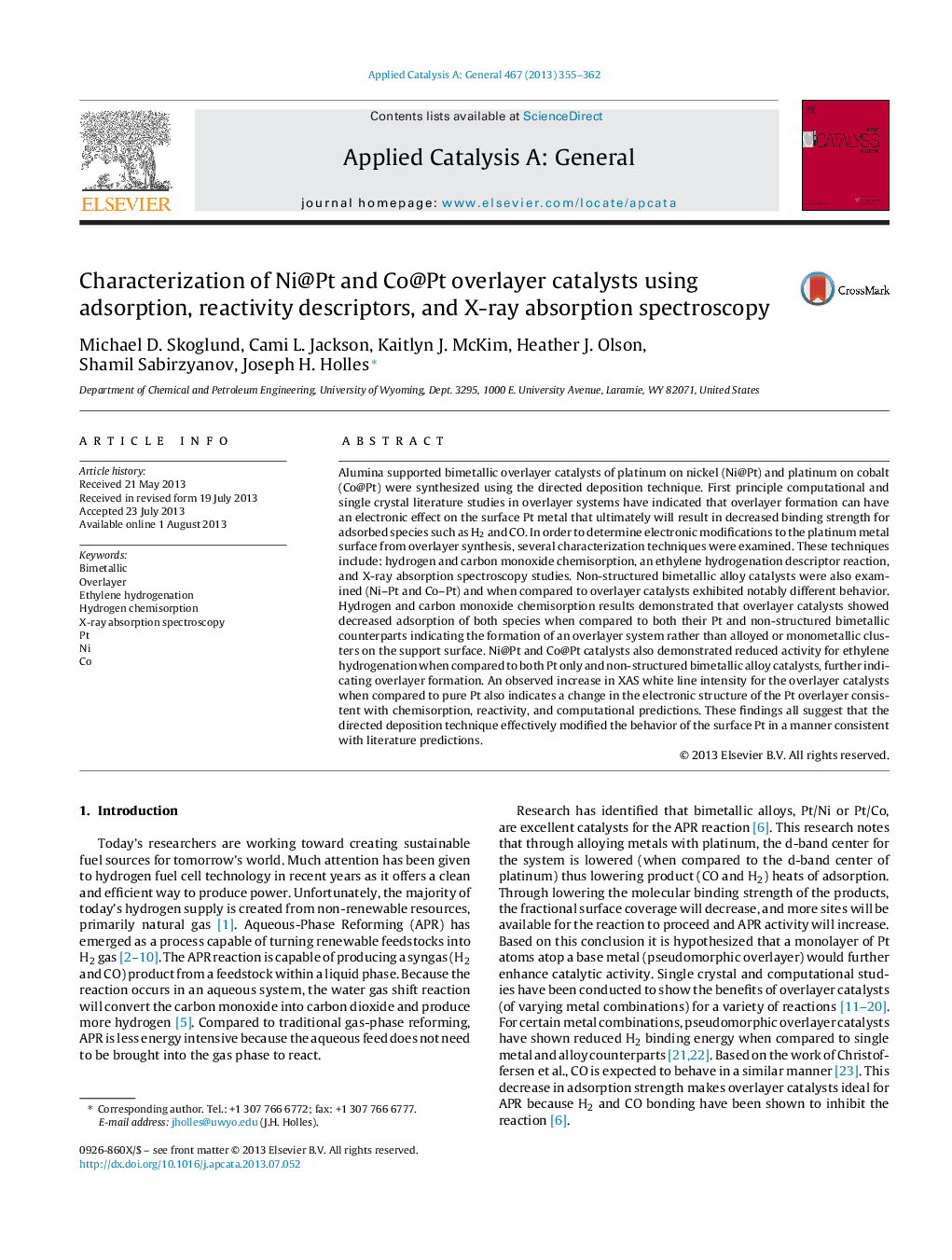| کد مقاله | کد نشریه | سال انتشار | مقاله انگلیسی | نسخه تمام متن |
|---|---|---|---|---|
| 40068 | 45843 | 2013 | 8 صفحه PDF | دانلود رایگان |

• Ni@Pt and Co@Pt alumina supported overlayer catalysts.
• Hydrogen chemisorption and hydrogen heat of adsorption.
• Ethylene hydrogenation activity as descriptor reaction.
• Change in XAS white line intensity consistent with electronic change.
Alumina supported bimetallic overlayer catalysts of platinum on nickel (Ni@Pt) and platinum on cobalt (Co@Pt) were synthesized using the directed deposition technique. First principle computational and single crystal literature studies in overlayer systems have indicated that overlayer formation can have an electronic effect on the surface Pt metal that ultimately will result in decreased binding strength for adsorbed species such as H2 and CO. In order to determine electronic modifications to the platinum metal surface from overlayer synthesis, several characterization techniques were examined. These techniques include: hydrogen and carbon monoxide chemisorption, an ethylene hydrogenation descriptor reaction, and X-ray absorption spectroscopy studies. Non-structured bimetallic alloy catalysts were also examined (Ni–Pt and Co–Pt) and when compared to overlayer catalysts exhibited notably different behavior. Hydrogen and carbon monoxide chemisorption results demonstrated that overlayer catalysts showed decreased adsorption of both species when compared to both their Pt and non-structured bimetallic counterparts indicating the formation of an overlayer system rather than alloyed or monometallic clusters on the support surface. Ni@Pt and Co@Pt catalysts also demonstrated reduced activity for ethylene hydrogenation when compared to both Pt only and non-structured bimetallic alloy catalysts, further indicating overlayer formation. An observed increase in XAS white line intensity for the overlayer catalysts when compared to pure Pt also indicates a change in the electronic structure of the Pt overlayer consistent with chemisorption, reactivity, and computational predictions. These findings all suggest that the directed deposition technique effectively modified the behavior of the surface Pt in a manner consistent with literature predictions.
Figure optionsDownload high-quality image (150 K)Download as PowerPoint slide
Journal: Applied Catalysis A: General - Volume 467, 2 October 2013, Pages 355–362